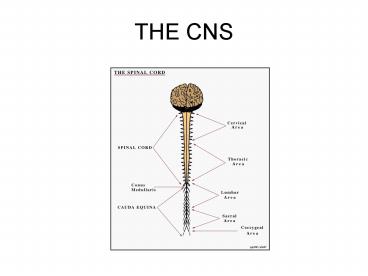THE CNS - PowerPoint PPT Presentation
1 / 17
Title:
THE CNS
Description:
THE CNS * * EXCEPTION-CRANIAL NERVES The 1st cranial nerve-the olfactory The 2nd cranial nerve-optic The 3rd cranial nerve-the occulomotor The 4th cranial nerve ... – PowerPoint PPT presentation
Number of Views:46
Avg rating:3.0/5.0
Title: THE CNS
1
THE CNS
2
EXCEPTION-CRANIAL NERVES
3
The 1st cranial nerve-the olfactory
4
The 2nd cranial nerve-optic
5
The 3rd cranial nerve-the occulomotor
6
The 4th cranial nerve-trochlear
7
The 6th cranial nerve- Abducens
Has only a somatic motor (general somatic
efferent) component. Somatic motor innervates
the lateral rectus muscle of the ipsilateral
orbit. The lateral rectus muscle is one of the
six extraocular muscles responsible for the
precise movement of the eye for visual tracking
or fixation on an object.
8
The 5th cranial nerve-the trigeminal
9
The 7th cranial nerve-Facial
10
The 8th cranial nerve-the auditory
(vestibulo-chochlear)
11
The 9th cranial nerve-the glossopharyngeal
12
The 10th cranial nerve-the Vagus
13
The 11th cranial nerve- the accessory
14
(No Transcript)
15
(No Transcript)
16
12th Cranial nerve-hypoglossal
17
- The hypoglossal nerve controls the intrinsic
musculature of the tongue and is evaluated by
having the patient "stick out their tongue" and
move it side to side. Normally, the tongue will
be protruded from the mouth and remain midline.
Note deviations of the tongue from midline, a
complete lack of ability to protrude the tongue,
tongue atrophy and fasciculations on the
tongue.The tongue will deviate towards the side
of a peripheral lesion, and to the opposite side
of a central lesion.































